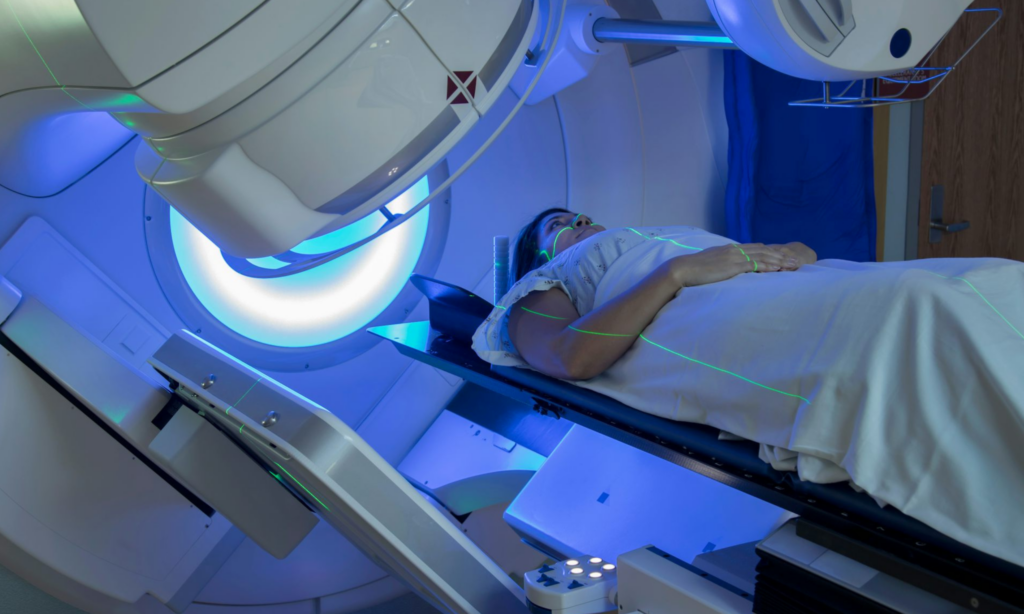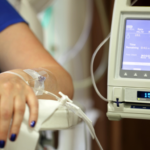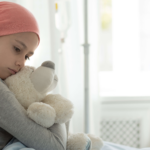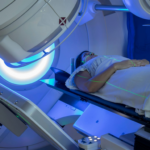
Breast cancer is one of the most common cancers affecting women, and radiation therapy plays a crucial role in its treatment. At Cancer Care Pune Clinic, a leading cancer treatment clinic in PCMC and Pune, patients receive advanced radiation therapy under the expert guidance of Dr. Jagdish Shinde. Radiation therapy is often recommended after surgery to eliminate any remaining cancer cells and reduce the risk of recurrence. In this blog, we’ll explore how radiation therapy works, its benefits, potential side effects, and what patients can expect during treatment.
Understanding Radiation Therapy for Breast Cancer
Radiation therapy uses high-energy rays or particles to destroy cancer cells. It is typically used after breast-conserving surgery (lumpectomy) or, in some cases, after a mastectomy to target any remaining cancer cells that may not be visible.
There are two main types of radiation therapy for breast cancer:
- External Beam Radiation Therapy (EBRT) – The most common type, where a machine directs radiation at the affected area.
- Internal Radiation Therapy (Brachytherapy) – A less common approach where radioactive material is placed inside the body near the cancer site.
Why Radiation Therapy Is Recommended
Radiation therapy is an essential part of breast cancer treatment for many patients. It helps in:
- Destroying remaining cancer cells after surgery.
- Reducing the risk of recurrence in the affected breast.
- Treating lymph nodes if cancer has spread.
- Preserving breast tissue when combined with a lumpectomy.
When Is Radiation Therapy Used for Breast Cancer?
Radiation therapy is recommended in different scenarios based on the stage and type of breast cancer:
- After Lumpectomy – Almost always recommended to ensure that no cancer cells remain.
- After Mastectomy – Used when the cancer was large, involved lymph nodes, or had unclear surgical margins.
- For Lymph Node Involvement – Radiation may be directed at the underarm, chest wall, or collarbone area.
- In Advanced or Metastatic Breast Cancer – Sometimes used to relieve pain or symptoms in cases where the cancer has spread.
The Radiation Therapy Process
Patients at Cancer Care Pune Clinic undergo a structured and precise treatment plan under Dr. Jagdish Shinde’s supervision. The process includes:
- Consultation & Planning – A radiation oncologist evaluates the patient’s medical history and decides the best approach.
- Simulation Session – Imaging scans (CT or MRI) help map out the precise area for radiation.
- Treatment Sessions – Radiation therapy is typically given 5 days a week for 3–6 weeks, with each session lasting only a few minutes.
- Post-Treatment Monitoring – Regular follow-ups ensure effective recovery and management of side effects.
Side Effects of Radiation Therapy
While radiation therapy is effective, it may cause some temporary side effects, including:
- Skin irritation – Redness, peeling, and sensitivity similar to a sunburn.
- Fatigue – Common but usually temporary.
- Breast swelling or tenderness – Usually mild and manageable.
- Changes in breast appearance – The treated area may feel firmer or slightly smaller over time.
- Lymphedema – Swelling in the arm if lymph nodes were treated.
At Cancer Care Pune Clinic, patients receive comprehensive support to manage side effects, including skincare recommendations and fatigue management strategies.
How to Prepare for Radiation Therapy
To ensure smooth treatment, patients should:
- Follow a healthy diet to maintain strength and energy.
- Stay hydrated to help the body recover.
- Wear loose, comfortable clothing to prevent irritation on the treated area.
- Avoid harsh soaps and lotions on the treated skin unless recommended by the doctor.
- Communicate with the care team about any discomfort or side effects.
Advancements in Radiation Therapy
Modern radiation therapy has evolved significantly, making treatment more effective and reducing side effects. Some advancements include:
- Intensity-Modulated Radiation Therapy (IMRT) – Delivers precise radiation doses, sparing healthy tissue.
- Proton Therapy – Targets tumors with minimal impact on surrounding tissue.
- Hypofractionated Radiation Therapy – Shorter treatment duration with the same effectiveness.
Life After Radiation Therapy
Once radiation therapy is completed, patients need regular follow-ups to monitor recovery. Some key aspects of post-treatment care include:
- Self-breast exams and mammograms to detect any changes.
- Healthy lifestyle choices like balanced nutrition and regular exercise.
- Emotional well-being support through counseling or support groups.
Summary:
Radiation therapy is a crucial component in breast cancer treatment, helping patients achieve better outcomes and reducing recurrence risks. At Cancer Care Pune Clinic, a trusted cancer treatment clinic in PCMC and Pune, Dr. Jagdish Shinde and his team provide state-of-the-art radiation therapy, ensuring personalized and compassionate care for every patient. If you or a loved one is facing breast cancer, reach out to Cancer Care Pune Clinic for expert guidance and comprehensive treatment.




